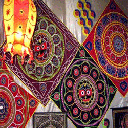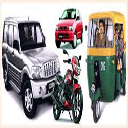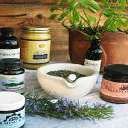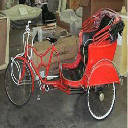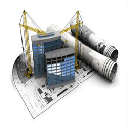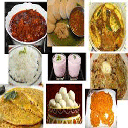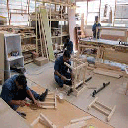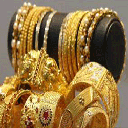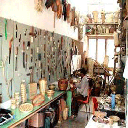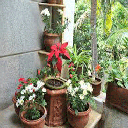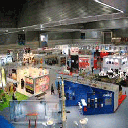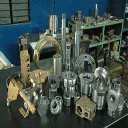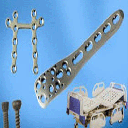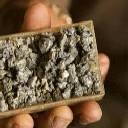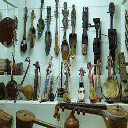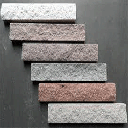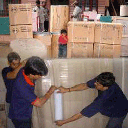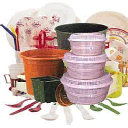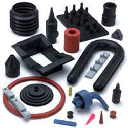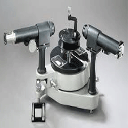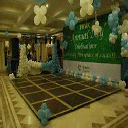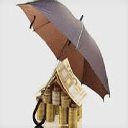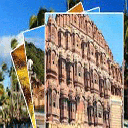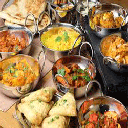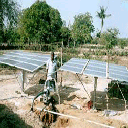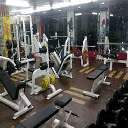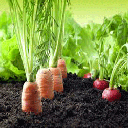Jammu and Kashmir is the jeweled crown of India with extravagant beauty of Himalayas. It’s in northern part of India situated between 32.17 degree and 36.58 degree north latitude and 37.26 degree and 80.30 degree east longitude. The total area of the State is 222,236 sq. kms including 78,114 sq kms under the illegal occupation of Pakistan and 42,685 sq kms under that of China.The state is commonly known as Kashmir, the territory is bounded on the north by Afghanistan and China, on the east by China, on the south by the state of Himachal Pradesh and the state of Punjab in India, and on the west by the North-West Frontier Province and the Punjab Province of Pakistan.In the Summer(May-October) capital of J&K is Srinagar, wail in the Winters (November-April)the capital is Jammu. J&K has three distinct regions viz. Ladakh, Jammu and Kashmir valley – offering a rich diversity in landscapes, religions and people. The state has been divided into 2 divisions (Jammu and Kashmir) and 14 districts for administrative purposes. Kashmir valley is covered by forested mountains, lakes, waterways and terraced fields. The Jammu region comprises of plains, mountains and foothills boasting of famous hill top shrine of Mata Vaishno Devi. Ladakh accounts for nearly two third of the state’s area and is a high altitude deserted region. The region is encompassed by oasis villages and ancient Buddhist monasteries. The State is well connected with rest of the country by air, rail and road . The Indian Airlines and private airlines operate regular flights to Srinagar, Jammu and Leh. The National Highway 1-A connects the capital cities of Srinagar and Jammu with rest of the country. Main Rivers in J&K are Galquit River, Jhelum River, Shajsqem River, Shikar(South) River, Zanskar river and Khurana River . The Jhelum River is the major Himalayan river which flows through the Kashmir valley. J&K is home to several valleys such as the Kashmir Valley, Tawi Valley, Chenab Valley, Poonch Valley, Sind Valley and Lidder Valley. J&K economy is mostly dependent on farming and animal husbandry. Majority of the population of the state depends on agriculture. Paddy, wheat and maize are the major crops. Barley, bajra and jowar are cultivated in some parts. Gram is grown in Ladakh. Though small, the manufacturing and services sector is growing rapidly. Tourism formed an important part of the Kashmiri economy. Although the tourism economy in the Kashmir Valley has been hit by the terrorism threat, Jammu and Ladakh continue to remain as popular tourist destinations. The Wood in Kashmir is also used to make quality Cricket bats and as they are popularly known as Kashmir Willow. Handicrafts from J&K have demand from both inside and outside the country. Coal, gypsum, and limestone are the major minerals produced in the state. Jammu and Kashmir is the only state where education is free up to university stage. Seasonal schools have been opened for people in the hilly areas and for the scheduled castes. Yet the state is educationally backward. Against the national literacy rate of 75.96% for males and 54.28% for females, the state has a literacy figure of only 65.74% for males and 41.82% for females respectively. On the technical education side, there are two regional engineering colleges in the state. In addition, there are four polytechnics to impart vocational training. District institutes of education have been opened in all the districts of the state to provide extensive and intensive training to the teachers.
Amar Mahal Palace Museum: In Jammu.once the residential palace of "Raja Amar Singh".Presently Maintained By Hari-Tara Charitable Trust Ramnagar,exhibits Pahari Paintings, family portraits of rulers of J&K,library.Of interest by itself is the building, a former palace designed like a French Chateau, in which the Museum is housed. This is a good-looking palace of red sand stone which stands amidst the most pictursque environments of Jammu. There is beautiful sight of the Shivaliks at the north and the River Tawi flows down below. adding to the Grandeur. This was once the residential palace of Raja Amar Singh. the palace has been converted to a museum and is looked after by Hari-Tara Charitable trust. The museum has a golden throne made of 120kg pure gold sofa and has golden lions embedded into it. The thore is placed in a hexagonal room. The museum has a gallery of paintings of paintings known as NAL DAMYANTI. It has a library of around 25000 books on various subjects and disciplines. This is really a beautiful spot to be visited round the year in Jammu. Bahu Fort & Temple:Situated on a rock face on the left bank of the river Tawi, this is perhaps the oldest fort and edifice in the city of Jammu. constracted by Raja Bahulochan,than after it's constructed by Dogra Rulers. The temple dedicated to Goddess Kali inside the fort popularly known as Bave Wali Mata. The fort overlooks river placidly down the Jammu city. Every Tuesday and Sunday pilgrims throng this temple and jostle for Tawi flowing worship. Bave Wali Mata is the presiding deity of Jammu. One can really imagine, on looking at the fort; the wars fought, the invasions prevented and even the grandeur of the Royal families. Today the fort is surrounded with beautiful terraced gardens, which is a favourite picnic spot of the city folk. It has waterfalls, flowers and big trees. Maha Maya Temple And City Forest On the by-pass road behind Bahu Fort, the city forest surrounds the ancient Maha Maya Temple overlooking the river Tawi. A small garden surrounded by acres of woods provides best view of the city. Dogra Art Museum :Situated in the Pink Hall of Mubarak Mandi complex, the museum has on its display about 800 rare and exquisite paintings from different schools of paintings such as Basoli, Jammu and Kangra. It houses a gold plated bow and arrow belonging to Mughal emperor Shah Jehan and a number of carpentry tools that are also an important section of the museum. There are hand written manuscripts of Shahnama and Sikendernama, written in Persian, housed here alon with a stone plate on which Takri script has been inscribed. A Dogra Heritage:Which is 150 years old. It was royal residence of Dogra Kings. The location was carefully selected for having a commanding view of river Tawi on one side and the city on other side. The palaces are built as a group of buildings around a courtyard. The complex has halls and Galleries, which were once used for official functions and ceremonies. As the time passed the need was felt to have separate buildings to house full-fledged Royal Secretariat. These buildings were constructed around a garden cum courtyard, which ultimately became the venue for important events for Royal audience for common man. Hari Parbat Fort (Srinagar):Situated at srinagar ,kashmir region Perched on top of the Sharika Hill, this Mughal fort lies to the west of the Dal Lake. Originally built during the reign of Akbar, the present structure, however, was put in place by the Afghan governor of Kashmir in the 18th century. A Parvati temple on the western slope and the Muslim shrines of Khwaja Makhdoom Sahib and Akhund Mullah Shah on the southern slope form the other attractions. Presently under army occupation, you need to obtain the entry permit from the Archaeological Department's office at Lal Mandi in Srinagar. Hari Parbat Fort: As legend suggests, this hill was once a lake as large as a sea, inhabited by the abominable demon, Jalobhava. They called on Sati Mata for her help and, taking the form of a bird, she dropped a pebble on his head. The pebble increased in size as it fell and crushed him. Hari Parbat is revered as that pebble and it became the home for all 33 crore gods of the Hindu pantheon. The Hari Parbat Hill occupies more or less a central position in the valley, exactly as the Mandalay Hill does in the Irrawaddy Valley. It consists of a type of basaltic rock favourable to the growth of almond trees. The whole of the hill-every stone and every dust particle of it-is sacred to the Hindus. On the southern side is situated the shrine of Maqdom Sahib and the mosque and monastery of Akhun Malla Shah the preceptor of Dara Shikoh, the eldest son of Shahi-Jahan the great Moghul ruler. There is a myth associated with this hill. Two demons, Tsand and Mond occupied the fair valley. Tsand conceded himself in water near the present location of Hari Parbat and Mond somewhere above the present Dal Gate. They were a menace to the people of the valley which could not be inhabited owing to their dreaded presence. The gods spent a number of years in meditation and penance invoking the blessing of the Goddess Parvati who assumed the form of a Hor (myna) and flew to Sumer from where she got a pebble in her beak and threw it on the demon Tsand to crush him. The pebble grew into a mountain. Bust as he shook the mountain, she, with her lion and all the gods sat on him and crushed him to death. She is worshipped as Sharika in Shri Tsakra (an emblem of cosmic energy pervading the universe) occupying the middle part of the western slope of the hill facing the city of Prawarsen (Srinagar). The hill is also called Predemna Peet or Kohi Maran. Ashada Naumi, whick falls some June or July, is a great festival associated with the shrine which is invariably visited by devout Hindus on this day. The outer wall was built by Akbar the Hari Parbat Fort, Hari Parbat Fort historical, Hari Parbat Fort travel, Hari Parbat Fort tourism, Hari Parbat FortGreat in A.D. 1590 at a cost of one crore and ten lakhs of rupees. This sum was sent from the Royal Treasury, and along with it also came Indian artisans skilled in masonry work. The inscription in Persian at the Kathi Darwaza commemorating this work can be read even today. He intended to lay the foundation of a new capital inside the fort and call it Nagar Nagor. The ruins of certain terraces can still be seen on the Pokhiri Bal side. The fort at the top of the hill was built by Azim Khan, the Pathan governor. It is now an arsenal and permission to visit it has to be obtained from the Director of tourism. The view of the Dal lake and a part of the valley from the fort is most charming. Just near the southern side of the outer wall there is a Guru Dwara which commemorates the visit of Guru Hargobind Singh. The Old Wall And Fort Decors The wall stretches for 5-km and is 10 meters high and has two gates, the Kathi and Sangin Darwaza. The Kathi is the main entrance with Persian commemorative inscriptions surrounding it. Visits to the fort, now used as an arsenal, are only possible with written permission from the director of tourism so for most visitors the fort will remain just a pleasant backdrop. The fort contains a temple revered for its image of the Goddess Sharika. Shrine Of Guru Chatti Padshahi Outside the fort's southern gate there is a shrine to the sixth Sikh guru. It's known as the Chatti Padshahi. The hill, which rises 122 metres from the valley floor, is surrounded by orchards of almond trees where many Kashmiris come for picnics in the spring and summer. Leh Palace: Leh Palace historical, Leh Palace travel, Leh Palace tourism, Leh Palace Historical Place, travel to Leh PalaceLocation : Leh, Ladakh Region.Lording it over the old town from the peak of a craggy granite ridge is the derelict palace of the 16th century ruler Sengge Namgyal. A scaled down version of the Potala in Lhasa, it is a textbook example of medieval Tibetan architecture, with gigantic sloping buttressed walls and projecting wooden balconies that tower nine storey above the surrounding houses. Since the Ladakhi royal family left the palace in the 1940s, damage inflicted by 19th century Kashmiri cannons has caused large chunks of it to collapse. Bring a flashlight, and be careful while walking in spite of restoration work, holes gape in the floors and dark staircases. Leh Palace, Leh Palace historical, Leh Palace travel, Leh Palace tourism, Leh Palace Historical Place, travel to Leh PalaceApart from the flaking murals that decorate the ruined royal apartments and staterooms on the upper levels, very few remnants of the palace's former splendor survive. The main reason to pick one's way through its gutted interior is to reach the roof terrace, which offers spectacular views over the mud brown rooftops of the old town to the wrinkled flanks and snow covered ridges of the Stok Kangri Mountains. Dukhar Temple:Also worth a look as one passes is the Dukhar temple on the fourth storey. The gloomy shrine, whose centrepiece is a thousand armed image of the Goddess Tara, houses eerie masks, musical instruments and weapons - props for the recitals and religious ceremonies once held in the courtyard outside.


